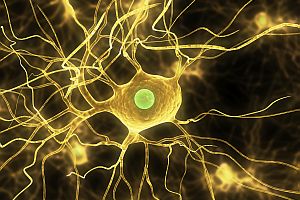Raking Leaves and a Pain-Free Fall
With summer becoming a distant memory, the leaves will soon be turning colors and falling from the trees, blowing about your yard, driveway and sidewalk. So it’s only natural that your thoughts are turning to the day you’ll need to get the rake out and start to work. However—as with all maintenance and household tasks that require some physical exertion—it‘s very important for you to take a few common-sense precautions against accident and injury.
Fall yard work, leaf raking and other outdoor activities carry numerous risks, including upper and lower back strain, neck strain, and shoulder pain. Just like sports, this type of physical activity can increase your chances of getting hurt if your body isn’t properly prepared for it. You can avoid these types of injuries by warming up, stretching and maintaining good posture as you go about your work.
Athletes are able to reduce the risk of injury by warming up and stretching. You can use this approach too. The American Chiropractic Association (ACA) recommends 10-15 minutes of stretching exercises such as trunk rotations, side-bends and knee-to-chest pulls. When these are combined with a short walk or some jumping jacks (which help to stimulate circulation) and followed by additional stretches, the body is ready for the sort of manual labor associated with raking and yard work.
While raking your yard, good posture can also prevent back problems—make sure you keep your back straight and your head up! Use common sense while working: lift with your legs and bend with your knees, taking care that you don’t strain your back while picking up bundles of leaves and grass. If you’re likely to carry heavy items, hold them close to your body to help prevent back strain. In order to take the pressure off your back, rake using the “scissors” stance: put your right foot forward and the left one back, then reverse after a few minutes. When using a lawn mower, try to use your core body weight to move it as opposed to your arms and back.
Also, remember that it’s important to pace yourself and take frequent breaks. This is particularly important when the weather is hot. If this is the case, also be sure to drink lots of water and wear sun-protection such as a hat, sunblock and sunglasses. Switching tasks regularly can help prevent repetitive motion injuries in vulnerable muscle groups—change body positions, or simply move onto another job for a short period of time before returning to the previous one.
Investing in extra protective gear (maybe some gloves to prevent blisters, a mask if you’re prone to allergies and protective eyewear) can make life easier while taking on outdoor chores. Ergonomic tools with extra padding, larger or curved handles are less tiring to use over a long time period.
One of the most useful things you can do to help prevent accidents and injuries is to have a plan for what you want to accomplish and to make sure that you have realistic expectations about how much you can get done in the time available. If you’re unaccustomed to physical labor, chances are pretty good that you’ll feel a bit stiff or possibly sore the next day. If this happens, you can use ice to soothe the discomfort. Of course, chiropractic care is always available if you need it.
As chiropractic physicians, we’re experts in diagnosing and treating a wide variety of conditions that affect the musculoskeletal and nervous system. We know from experience how easy it is for fall clean-up to unexpectedly go wrong. Please be smart and take reasonable precautions!








